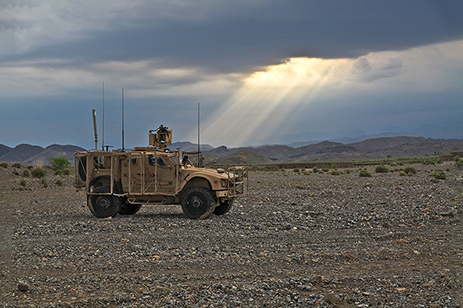The goal of reducing the cost of equipping Army vehicles with new capabilities, while adding increasing interoperability and flexibility of operation, can be accomplished through the use of a Modular Open Systems Approach (MOSA), a technical and business strategy for designing an affordable and adaptable system.
MOSA, the U.S. Department of Defense (DoD) mandate for modular open system design, is the preferred method for implementation of open systems, and is required by U.S. law, which states all major defense acquisition programs (MDAP) are to be designed and developed using a MOSA that:
Employs a modular design that uses open system interfaces between a major system platform and a major system component, between major system components, or between major system platforms;
Is subjected to verification to ensure major system interfaces comply with, if available and suitable, widely supported and consensus-based standards
Uses a system architecture that allows severable major system components at the appropriate level to be incrementally added, removed, or replaced throughout the life cycle of a major system platform to afford opportunities for enhanced competition and innovation.
Log in and download the white paper to learn more.
Jason DeChiaro
System Architect
Jason DeChiaro is a System Architect at Curtiss-Wright. He received his Electrical Engineering degree, with distinction, from Worcester Polytechnic Institute. His responsibilities include supporting customers in architecting deployable VPX systems, including CMOSS/SOSA compliant designs. Jason has over 15 years of engineering experience in the defense industry, supporting the U.S. Air Force, U.S. Army, and U.S. Navy, as well as the IC community. In addition to architecting VPX systems, Jason also supports customers’ Assured Position Navigation and Timing (A-PNT) requirements.
Dominic Perez
CTO
Dominic Perez joined Curtiss-Wright PacStar in 2008 as part of the company’s Quality Department. He took an active role in product development and was part of the team that created the first small form factor (SFF) PacStar 1200-Series modules which evolved into the industry-leading PacStar 400-Series product line.
In 2013, he led the Quality Systems and Networking Engineering departments, which among other responsibilities created the PacStar Secure Wireless Command Post (SWCP). He was promoted to Vice President of Systems Engineering in 2020 and tasked to lead the development of the company’s next generation of integrated solutions. In 2021, he was promoted to Chief Technical Officer and appointed a Technical Fellow at Curtiss-Wright.



